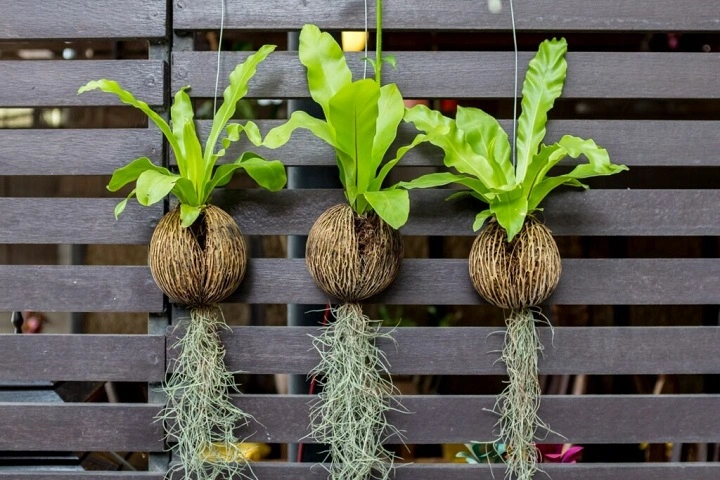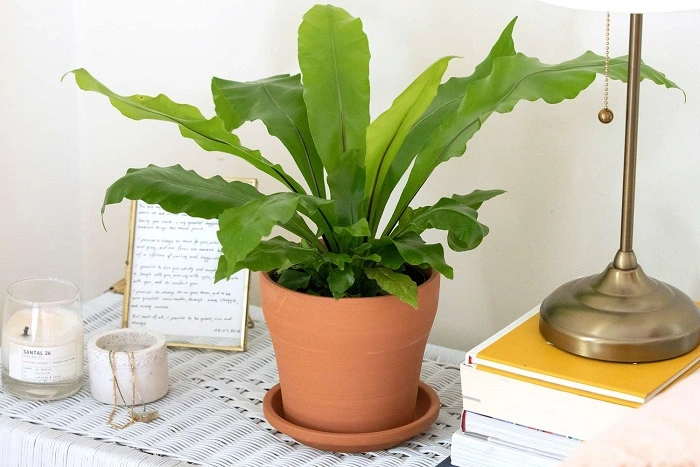The bird’s nest fern (Asplenium nidus) is a popular tropical plant admired for its broad, wavy leaves and central rosette that resembles a bird’s nest. Native to Southeast Asia, Australia, and the Pacific Islands, this fern isn’t just a single plant—it’s part of a diverse group of varieties, each with its own texture, shape, and growing quirks. While many people recognize the classic bird’s nest fern with its glossy apple-green leaves, there are several other types with surprising twists.
Let’s dive into the most stunning birds nest fern varieties, exploring what makes each one special and why they might be perfect for your indoor jungle or shaded garden.
Classic Birds Nest Fern (Asplenium nidus)
Why It’s Popular:
The traditional version of birds nest fern is easily recognized by its smooth, flat, sword-shaped fronds that gently curl at the edges. It’s elegant, low-maintenance, and thrives in humidity, making it a favorite for bathrooms and terrariums.
Cool Fact:
In its native habitat, it often grows as an epiphyte—anchored on trees rather than in soil, gathering nutrients from air and rain.
Asplenium antiquum
How It’s Different:
Asplenium antiquum is often mistaken for its cousin, Asplenium nidus, but its leaves are narrower, more upright, and often appear more structured and architectural. This variety is just as easy to care for and brings a vertical element to a plant collection.
Cool Fact:
Unlike many houseplants, Asplenium antiquum is non-toxic to pets, making it a safe choice for homes with curious cats or dogs.
Asplenium ‘Crispy Wave’
Why It Stands Out:
One of the most sought-after modern varieties, the Crispy Wave fern boasts deeply ruffled leaves that resemble waves or curly kale. This unique shape isn’t just for show—it increases the surface area of the leaves, making it an efficient air purifier.
Cool Fact:
The Crispy Wave fern was even studied by NASA for its potential in improving indoor air quality.
Asplenium ‘Victoria’
Delicate and Refined:
This compact cultivar is a favorite for small spaces. The Victoria fern has slightly ruffled leaves that fan out in a symmetrical rosette, often giving the whole plant a formal, almost floral appearance.
Cool Fact:
It’s perfect for shelves or desktops where space is limited but you still want a touch of green.
Asplenium ‘Osaka’
Drama in Every Leaf:
The Osaka birds nest fern brings drama with its twisted, frilly leaves that arch and curl dramatically. Each leaf looks different from the next, giving this plant a chaotic, wild look that plant lovers often adore.
Cool Fact:
This variety thrives in lower light conditions, making it an ideal pick for spots where other ferns might not do well.
Asplenium ‘Leslie’
Full and Feathered:
Leslie is known for its feathery, wavy fronds that give the plant a softer, more voluminous look. It tends to grow bushier than some other varieties and offers a beautiful contrast when grouped with more structured plants.
Cool Fact:
Because of its texture, Leslie often pairs well with sleek indoor pots for a contemporary touch.
Asplenium ‘Fimbriatum’
Fringed and Frilly:
The Fimbriatum variety is all about detail. Its frilly, finely-divided leaf margins give it a delicate look, almost like a cross between a classic fern and a bird’s nest fern. It’s one of the more unusual options on the market.
Cool Fact:
It’s often referred to as the “Fringed Birds Nest Fern” and is especially prized by collectors.
Asplenium ‘Austral Gem’
Shiny and Tough:
Austral Gem is a hybrid fern known for its glossy, almost plastic-like leaves. It looks fragile but is surprisingly hardy, drought-tolerant, and resistant to pests—great for people who are new to plant parenting.
Cool Fact:
It’s a hybrid of a bird’s nest fern and a hardy ground fern, which gives it both beauty and resilience.
Asplenium nidus ‘Campio’
Elegant Waves:
Campio features broad, leathery fronds with elegant waves that are neither too dramatic nor too plain. It’s the Goldilocks of birds nest ferns—just right for those who want something visually interesting but not over-the-top.
Cool Fact:
This variety is highly adaptable and is known to survive brief dry spells better than other more sensitive types.
Asplenium ‘Cobra’
Rare and Exotic:
Cobra lives up to its name with coiled, crinkled leaves that resemble the hood of a cobra. It’s one of the more exotic varieties, often sought by advanced collectors and indoor plant stylists looking for a showstopper.
Cool Fact:
It’s rarer in the plant market, so finding one can be a bit of a treasure hunt—but worth it!
Birds Nest Fern Care Tips (All Varieties)
While these varieties differ in appearance, their care is surprisingly consistent:
Light: Indirect or dappled light; avoid direct sun which can scorch leaves.
Water: Keep soil moist but never soggy. Let the top inch of soil dry before watering again.
Humidity: Loves humidity! Ideal for bathrooms or with a humidifier.
Soil: Use a well-draining potting mix rich in organic matter.
Fertilizer: Feed monthly during the growing season with a diluted liquid fertilizer.
Repotting: Every 2-3 years or when rootbound.
Why Birds Nest Fern Varieties Are Trending
The surge in indoor gardening and aesthetic home design has brought birds nest ferns into the spotlight. Here’s why they’re in such high demand:
Pet-Friendly: Most varieties are non-toxic.
Air-Purifying: Excellent at removing pollutants.
Low Maintenance: Forgiving even for forgetful waterers.
Dramatic Foliage: Their bold forms make them natural focal points in plant displays.
Versatility: From boho chic to minimalist decor, there’s a variety to match any style.
FAQs
Which bird’s nest fern is best for beginners?
The classic Asplenium nidus or Crispy Wave are great beginner-friendly options due to their adaptability and hardiness.
Can birds nest ferns survive in low light?
Yes, they can tolerate low to medium light. However, their growth may slow down compared to brighter indirect light.
Are bird nest ferns safe for pets?
Yes! Most birds’ nest fern varieties are non-toxic to cats and dogs.
How do I know if my fern needs water?
Check the top inch of soil. If it feels dry, it’s time to water. Drooping or crisp leaves are also signs of dehydration.
Do all bird nest ferns grow large?
Not all. Varieties like ‘Victoria’ or ‘Crispy Wave’ stay compact, while others like the classic nidus can grow quite large indoors.




